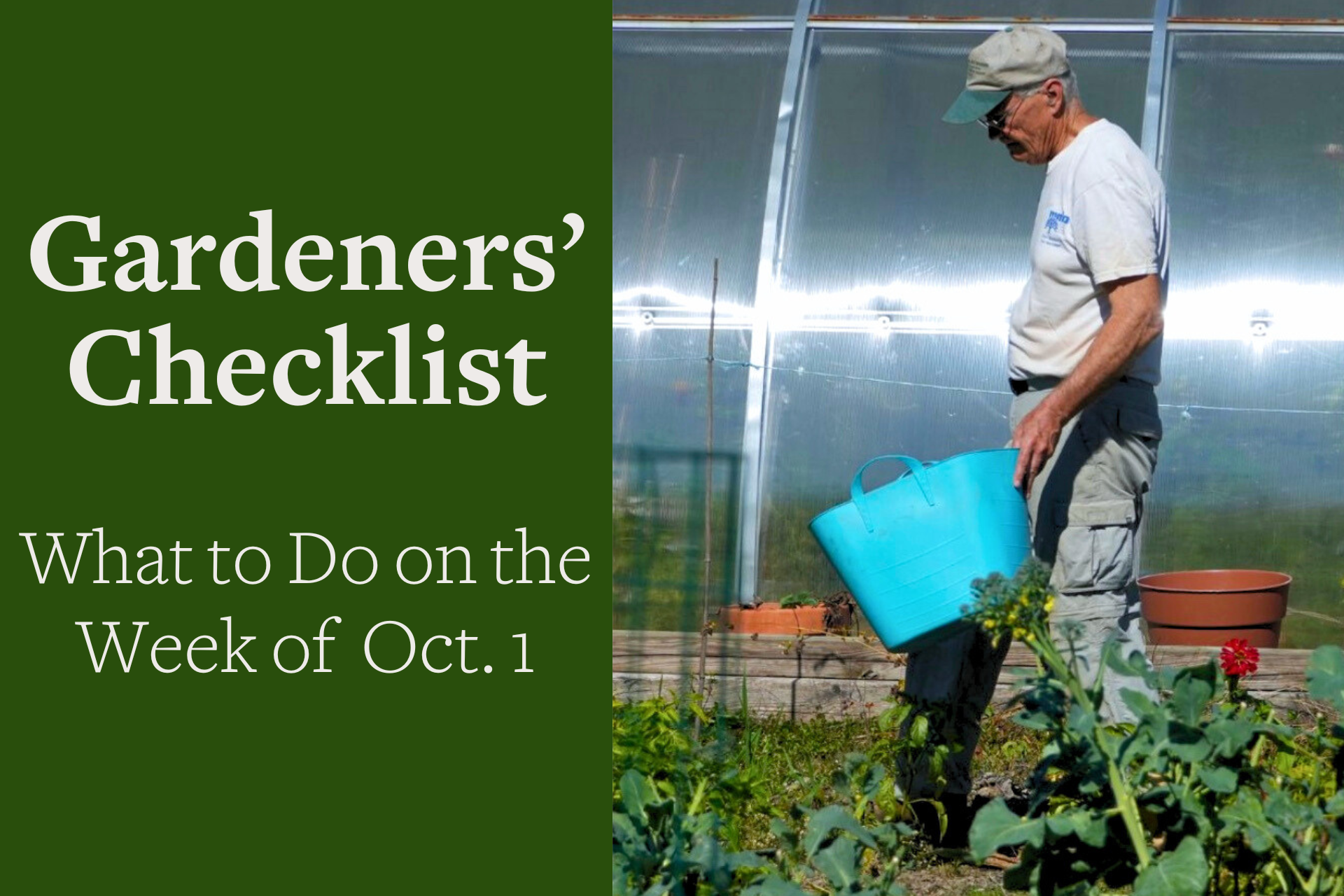You are here
Gardeners Checklist: Here Is What to Do the Week of Oct. 1
Gardeners Checklist: Here Is What to Do the Week of Oct. 1
by Ron Kujawski
* If you are adding topsoil to gardens, mix it into the existing soil. Topsoil brought in from another location is almost certain to be different from the existing soil. If it is not mixed in, the result is a layering of two distinct soil types. Such layering can interfere with drainage if the original soil is denser than the topsoil. Likewise, plant roots will only grow in the less dense topsoil and not downward into the original soil. This makes the plant more vulnerable to drought.
* Don’t get your knickers in a twist if you see your pines, spruce, or hemlocks dropping a lot of needles. The older or innermost needles of conifers fall off in the fall. (Is that why this season is called fall?) On the other hand, if the outermost needles drop, twist your knickers. You’ve got a problem.
* Dig up summer flowering “bulbs” such as canna, caladium, calla, dahlia, gladiolas, and tuberous begonias just after a light frost but before a hard frost. A hard frost is when temperatures drop below 28 degrees F.
* Harvest ornamental gourds before frost. Leave an inch or two of stem attached to the fruit. Wash the gourds in soapy water, rinse in a solution of household disinfectant such as bleach or Lysol, and spread them out on newspaper to dry in a warm place for ten days.
* Pull up diseased vegetable plants. If the diseases are on the shoots rather than the roots of the plants, I’m of the mind that these can be tossed on the compost pile and covered with soil. Once this organic debris is decomposed, the organisms that infected the plants should no longer persist. That’s a debatable assumption. If in doubt, start a separate compost pile just for diseased plant material. Use this compost product around trees and shrubs.
*
Many gardeners will be digging up their root crops (beets, carrots, celeriac, parsnips, rutabagas, and turnips) this month. If you’re one of the digger-uppers, most likely you’re not going to eat all of them at once. So, here are a few suggestions for storing root crops. First, cut off the leaves except for about an inch left attached to the root. Gently rub off soil adhering to the roots, but do not cut or rub off any fine lateral roots coming off the carrot, beet, etc., since this can lead to decay. For the same reason, do not wash the roots until ready to use. Root crops can be stored in the fridge, but if you have a lot of them, try this. Place a one-inch layer of moist, not wet, sand in the bottom of a five-gallon plastic bucket. Be careful not to kick the bucket! A peach basket or cardboard box lined with a sheet of plastic will do if you don’t have a bucket. Lay some roots on the sand so they are not touching one another. Cover these with another layer of sand and another layer of roots, and repeat the process until the containers are full. Leave the containers in a cold place where temperatures will not go below freezing. Then simply remove the veggies as needed.
Ron Kujawski began gardening at an early age on his family's onion farm in upstate New York. Although now retired, he spent most of his career teaching at the UMass Extension Service. He serves on Berkshire Botanical Garden’s Horticulture Advisory Committee. His book, Week-by-Week Vegetable Gardener’s Handbook, is available here.
Help Our Garden Grow!
Your donation helps us to educate and inspire visitors of all ages on the art and science of gardening and the preservation of our environment.
All donations are 100 percent tax deductible.


